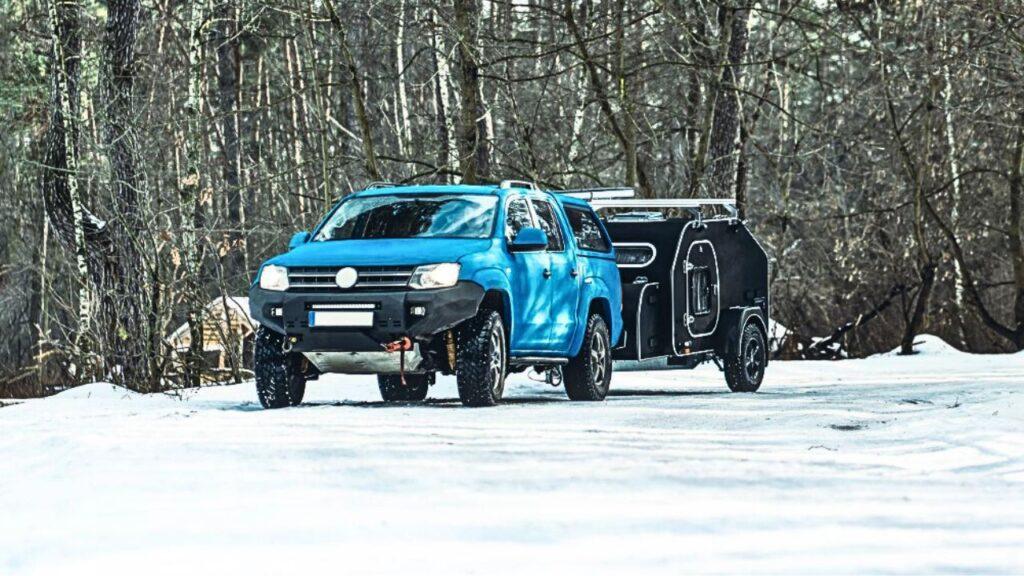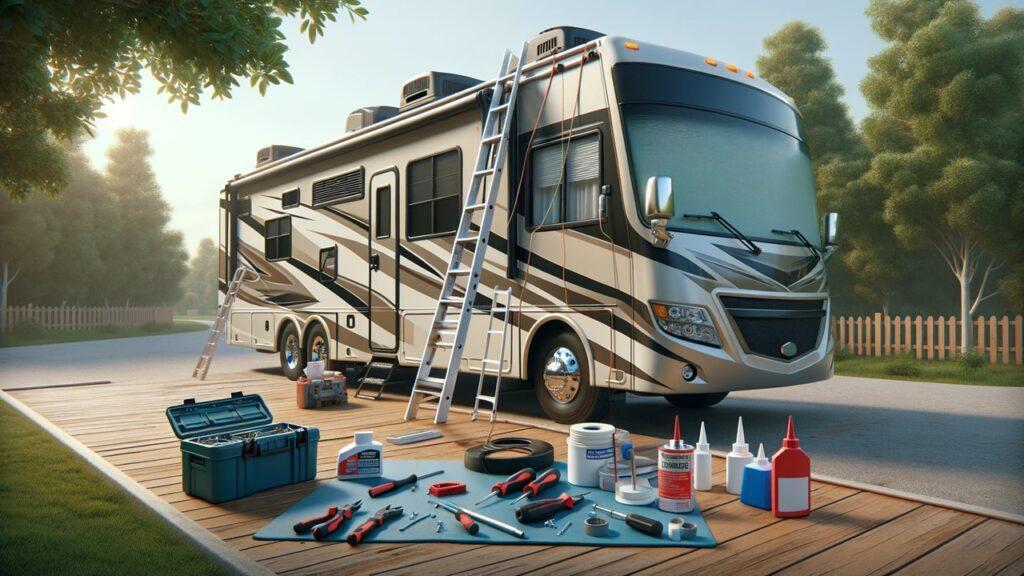
Ready to upgrade your RV experience with a touch of modern convenience? Installing a digital thermostat in your RV isn’t just about following a trend; it’s about enhancing comfort and efficiency on your mobile adventures. Unlike the old analog models, digital thermostats offer precise temperature control and can even save energy, which is crucial when you’re exploring the great outdoors. Imagine adjusting your RV’s climate from a smartphone app or having a consistent temperature without constant manual adjustments. The advantages are clear, and the upgrade is simpler than you might think. In this guide “easy DIY instructions for installing a digital thermostat in your RV” we’ll cover everything from the basics of what a digital thermostat is, to why making this switch can be a game-changer for your travels.
Preparing for Your Digital Thermostat Installation
Before diving into the nitty-gritty of installing a digital thermostat in your RV, let’s set the stage for a successful installation. You’ll need a mix of the right tools and a solid understanding of your RV’s existing system to ensure compatibility and ease of installation.
Tools and Materials Needed
To begin, assembling the right toolkit is essential for installing a digital thermostat in your RV. You will need basic hand tools like screwdrivers and wire strippers, as well as some electrical tape, connectors, and possibly a drill if you need to make new holes for mounting the thermostat. Ensure you have all these tools at hand to avoid any mid-process runs to the hardware store, which can disrupt your workflow and prolong the task.
Understanding Your RV’s Existing System
Now, let’s talk about your RV’s current heating and cooling setup. Each model and make of RV can vary significantly in how their systems are configured. Start by identifying whether your RV uses a centralized system or if it has separate controls for different zones. This will determine the type of digital thermostat you need and how it should be installed. Additionally, understanding the wiring system of your existing thermostat is crucial. Take a photo or make a note of the wiring before dismantling anything; this will be incredibly helpful when you connect your new digital thermostat.
Furthermore, it’s essential to check compatibility. Some digital thermostats may require a common wire (often referred to as a ‘C’ wire) that isn’t present in older RV models. In such cases, you might need an adapter or a different model that suits the existing setup. By thoroughly assessing your current system, you ensure that the new digital thermostat can be integrated smoothly, maintaining the integrity and functionality of your RV’s climate control system.
After covering these preparatory steps, you’re now better equipped to move forward with the actual installation. Installing a digital thermostat in your RV promises not just an upgrade in technology but also an enhancement in your living comfort. This preparation phase is crucial, ensuring that the installation process goes smoothly, paving the way for a more enjoyable and controlled environment inside your RV.
In the next section, we’ll dive into the step-by-step installation process, making sure you have all the knowledge needed to not only install but also get the most out of your new digital thermostat. Stick with us as we help transform your RV into a snug, smartly managed home on wheels.
Step-by-Step Installation Guide for Digital Thermostat In Your RV
Embarking on the journey of installing a digital thermostat in your RV brings a promise of enhanced control and comfort as you traverse the open roads. Whether you’re parked lakeside or nestled in a mountain retreat, managing your RV’s climate should be effortless and efficient. This guide will walk you through each critical step, ensuring you’re not just following instructions, but also understanding the whys and hows behind each one.
Step 1: Turn Off the Power
Safety first! Begin by ensuring that all power sources to your RV are completely turned off. This includes disconnecting from any external power supplies and turning off the main breaker inside your RV. This step is crucial to prevent any electrical accidents and ensure a safe working environment.
Step 2: Remove the Old Thermostat
Carefully remove the faceplate of your old thermostat. Usually, it’s snapped into place with tabs or screws. Once off, you’ll see the wires. Before disconnecting them, take a clear photo or note which wires connect where—this is vital for wiring your new thermostat correctly. Unscrew the mounting screws and gently pull the unit away from the wall, ensuring the wires don’t slip back into the cavity.
Step 3: Identify and Prepare the Wires
With the old thermostat removed, inspect the wires for any wear or damage. If everything looks good, use your wire strippers to prepare the ends for the new thermostat. If your new thermostat requires a ‘C’ wire and your RV doesn’t have one, you may need to install an adapter or consult a professional for a workaround.
Step 4: Mount the New Thermostat Base
Hold the base of your new thermostat against the wall, ensuring it’s level—some thermostats come with a built-in level for accuracy. Mark the wall through the mounting holes, set the base aside, and drill the holes if necessary. Secure the base to the wall with screws, making sure it’s firm and straight.
Step 5: Connect the Wires
Refer to the photo or notes you took earlier to connect the wires to the corresponding terminals on your new thermostat. This process varies slightly between models, so consult your specific thermostat’s manual for exact instructions. Once connected, gently push any excess wire back into the wall and attach the faceplate of the thermostat.
Step 6: Restore Power and Test
Turn the power back on to your RV and activate your new digital thermostat. Follow the initial setup instructions provided by the manufacturer, which may include connecting to Wi-Fi and configuring settings via a smartphone app. Test different settings to ensure the thermostat controls the temperature accurately and responds to your adjustments.
Remember that the process of installing a digital thermostat in your RV is not just about following steps but about upgrading your travel experience. A successful installation means you can anticipate more comfortable, energy-efficient journeys in your mobile home. With your new system up and running, you’re ready to enjoy your adventures, no matter the weather outside.
Testing Your New Digital Thermostat
Once you’ve completed the journey of installing a digital thermostat in your RV, it’s crucial to ensure everything is working seamlessly. Testing your new setup not only confirms the installation is correct but also sets you up for a worry-free climate experience in your RV. Here’s how you can make sure your new digital thermostat is ready to go the distance.
Start by setting your thermostat to a specific temperature and observe if the RV’s heating or cooling system activates appropriately. It should respond without delay and start moving towards the set temperature steadily. Check different modes like heating, cooling, and auto to ensure all functions are operational. If your thermostat has a fan-only mode, test this feature as well.
If you encounter issues, like the thermostat not turning on or not responding to your settings, here are a few troubleshooting tips:
- Double-check your wiring connections, ensuring each is secure and correctly placed according to your notes or installation manual.
- Ensure the power supply to your thermostat and RV is stable and uninterrupted.
- Reset the thermostat—most models will have a reset function, either as a button or within the settings menu.
Testing isn’t just a one-time task. Regular checks can keep your travels comfortable regardless of where the road takes you.
Maintenance Tips for Your RV’s Digital Thermostat
Maintaining your digital thermostat ensures it remains a reliable companion on your RV adventures. Regular maintenance is straightforward and helps avoid unexpected hiccups. Here’s how to keep your thermostat in top condition:
Firstly, regularly clean the thermostat’s exterior and screen to prevent dust and debris from affecting its functionality. Simply use a soft, dry cloth for cleaning; avoid harsh chemicals or excessive moisture.
Secondly, check the battery or RV deep cycle batteries life if your thermostat is not hardwired. Most digital models will alert you when batteries need replacing, but keeping an eye on this manually ensures you’re never caught off guard.
Additionally, updating the thermostat’s firmware is crucial. Manufacturers often release updates to improve functionality and fix bugs. Connect your thermostat to Wi-Fi periodically to check for updates, ensuring your device stays current and functional.
Why Upgrade to a Digital Thermostat in Your RV?
Wondering why installing a digital thermostat in your RV is worth the effort? Upgrading to a digital model offers significant benefits that enhance your RV lifestyle, making it a wise investment for anyone who loves the open road.
Digital thermostats provide more precise temperature control, allowing you to maintain a consistent and comfortable environment inside your RV. This precision not only boosts comfort but also improves energy efficiency, potentially reducing your energy costs.
Furthermore, many digital thermostats offer programmable settings, enabling you to adjust the climate in your RV according to your schedule. Imagine waking up to a perfectly warmed space on a chilly morning, or returning to a cool RV after a day exploring under the sun.
Moreover, the integration with mobile devices and smart home systems is a game-changer. Managing your RV’s climate remotely, adjust settings based on weather forecasts, and more. This connectivity not only adds convenience but also enhances your security by alerting you to any HVAC issues while you’re away from your RV.
Installing a digital thermostat in your RV is more than an upgrade; it’s a step towards a smarter, more comfortable, and efficient way of traveling. Whether you’re a weekend warrior or a full-time RVer, this addition promises to enhance your experience, letting you focus more on enjoying your adventures and less on managing your environment.
Wrapping It Up!
Wrapping up, the importance of installing a digital thermostat in your RV cannot be overstated. This upgrade not only enhances your comfort during travels but also elevates your RV’s energy efficiency and overall functionality. By ensuring your installation is done correctly, you safeguard not just your investment in the thermostat but also the wellbeing of your RV’s heating and cooling system. A well-installed digital thermostat offers precision in temperature management, ease of use through advanced programmability, and potential savings on energy costs. Whether you’re a casual camper or a full-time traveler, this smart upgrade is an essential step toward a more controlled, comfortable, and efficient RV experience. Embrace this technology to make every journey as comfortable as your home.
Related FAQs
What Is The Ideal Placement For A Digital Thermostat In An RV?
Ideally, place it away from direct sunlight and drafts for accurate readings.
Can I Install A Digital Thermostat In An RV Myself?
Yes, with basic tools and careful following of instructions, you can self-install.
How Does A Digital Thermostat Save Energy In An RV?
By maintaining precise temperature control and reducing unnecessary heating/cooling.
What Should I Do If My Digital Thermostat Isn’t Responding?
Check connections and power supply, then consult the troubleshooting section of the manual.
Are Digital Thermostats Compatible With All RV Models?
Most are universally compatible, but check the model’s specifications for assurance.
As outdoor enthusiasts ourselves, we understand the significance of reliable gear that can withstand the elements and support you throughout your journey. We try to provide as much real life information with our guides and how tos to the readers as possible. Our honest and transparent reviews of essential outdoor gadgets and products are rooted in testing and experience. We take great satisfaction in offering unbiased evaluations, ensuring that you can make informed decisions when investing in outdoor gear. As an affiliate website, we may earn a small commission from some of the products we feature. However, rest assured that our opinions are not influenced by this, and your trust is always our top priority.



